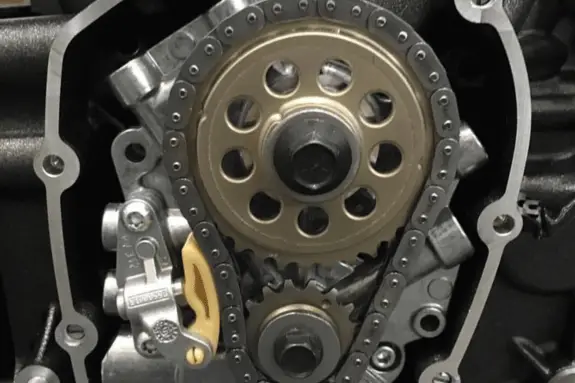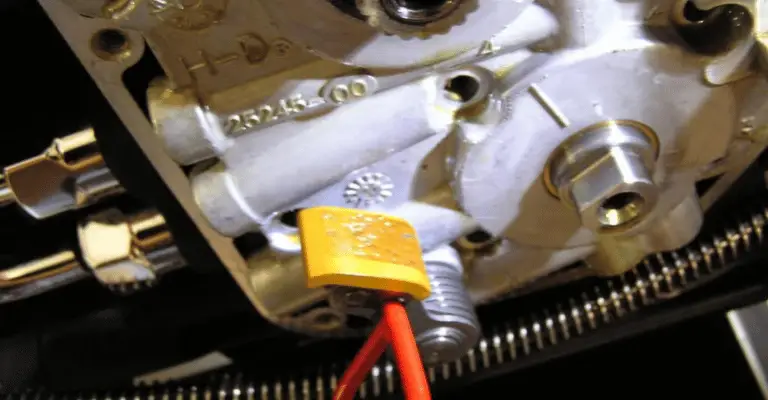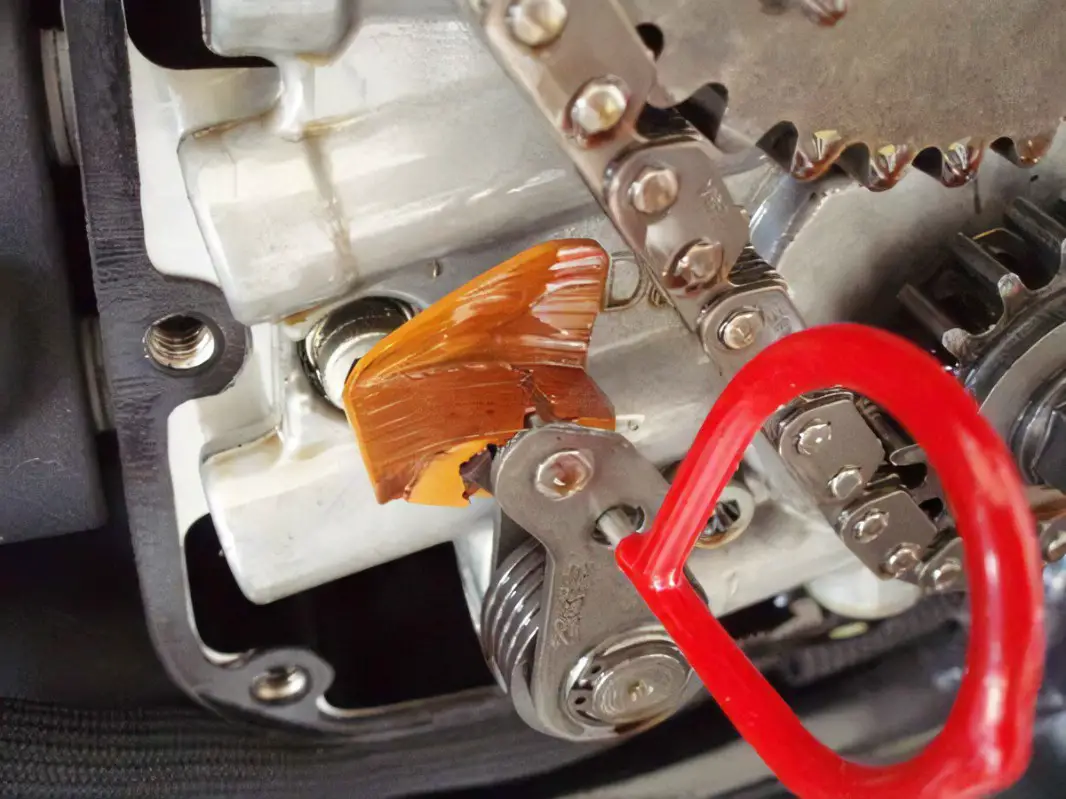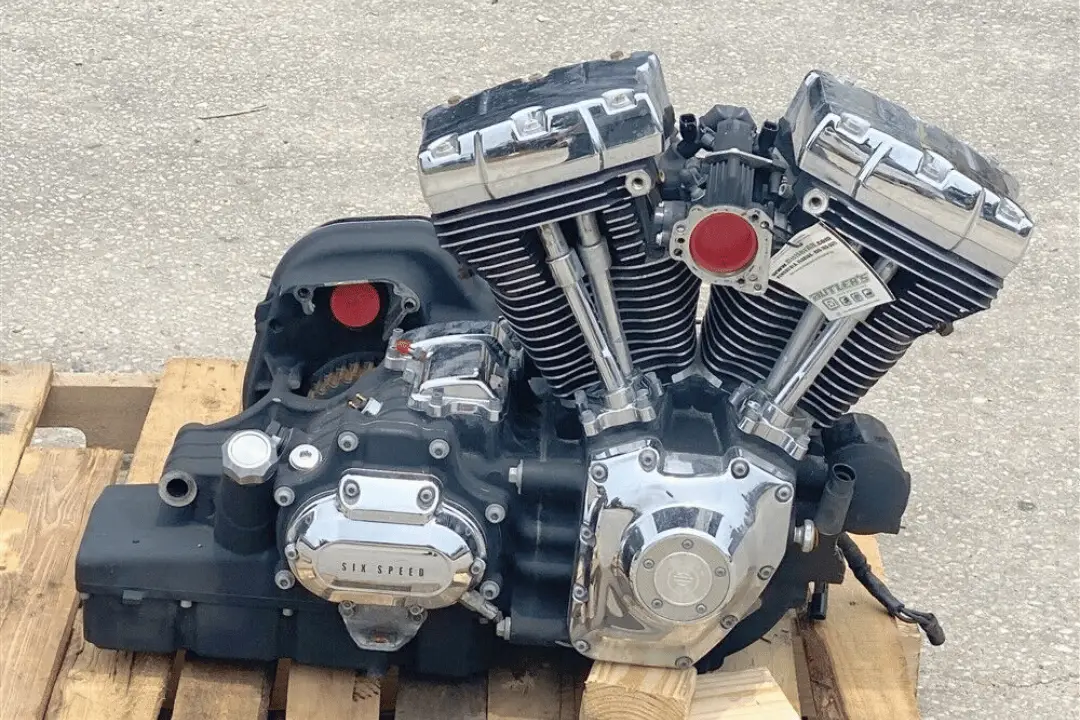Saddle up my fellow Harley enthusiasts – it’s time to tackle the open road armed with invaluable knowledge. It’s no secret that not all Harley Twin Cam engines are created equal. While some are a reliable engine that roar to life promising adrenaline-fueled adventures, others may serve as a quick route to frustration and repair shops.
In this insightful article, we’re diving deep, mapping out the Harley Twin Cam years to avoid that every rider should steer clear from. Consider this your compass in the wilderness of motorcycle shopping, pointing you away from potential pitfalls and toward smoother rides. So what’re you waiting for? Lets get to it!
So, You’re Familiar With The Twin Cam Problem Right?
The Twin Cam engine, despite its popularity, did not escape criticism. The most significant issue lay within the cam chain tensioner system. The original design involved plastic shoes that would rub against the cam chain, causing rapid wear and tear. Over time, these shoes disintegrated, leading to a blockage in the oil passages and damage to the oil pump, eventually causing the engine to seize if left untreated.
Here’s an example of the hydraulic tensioner in its intended position:

Although Harley Davidson replaced the spring tensioners with hydraulic ones in 2006, early models with the spring tensioner setup were prone to this issue. While the hydraulic upgrade vastly improved the system’s longevity, some Twin Cam engines still experienced premature tensioner failure.
How Does This Affect The Oil Cooling System?
The oil cooling system in a Harley Davidson plays a pivotal role in ensuring the engine runs smoothly and efficiently. Proper oil flow is essential to lubricate the engine’s components, reduce friction, and dissipate heat. However, when issues arise with the Twin Cam engine, particularly with the cam chain tensioner system, it can have a domino effect on the cooling system also.
The degradation of the cam chain tensioner system can lead to blockages in the oil passages. These blockages can prevent the oil from flowing freely through the oil tubes, leading to inadequate lubrication of the engine components. Over time, if left untreated, this can cause the engine to overheat, resulting in severe damage.
The reduced oil flow can also affect the efficiency of the cooling system. Without proper circulation, the oil can’t effectively dissipate heat, leading to increased engine temperatures and overheating issues.
Related: Best Spark Plugs for Harley Davidson Twin Cam: Full Guide
What Were The Harley Twin Cam Years to Avoid?
The Twin Cam engine was introduced in 1999 and became a staple of the Harley Davidson lineup. However, several model years were notably problematic:
- 1999 – 2006: These years were notorious for issues with the camshaft chain tensioners. Early Twin Cam engines had a poorly designed chain that wore out the plastic tensioner shoes. While Harley Davidson eventually replaced the spring tensioners with hydraulic ones, engines made during this period were prone to tensioner failures.
Keep reading:
> Best Year Harley Twin Cam Engine
> Harley 96 vs 103: What’s The Deal?
> Twin Cam 88 vs 96: Dual Cam Shootout (What’s Better?)

- 2003 – 2006: Another issue arose during this period when Harley Davidson decided to cut production costs and replaced the Timken cam bearings with pressed-in roller bearings and a pressed crankshaft. This decision led to runout or wobbling issues in the crank assembly, causing damage to the oil pump, cams, and parts of the engine block.
Most Vulnerable Engine for Harley Twin Cam Years
One particular Harley twin cam engine stands out in terms of vulnerability: the Twin Cam 88 engine. Introduced as a groundbreaking innovation, it soon became evident that this engine had its fair share of issues that could lead to catastrophic engine failure if not addressed promptly.
Read more: Is The Twin Cam 88 A Good Motor? Yes and No (Here’s Why)
The primary concern with the Twin Cam 88 was its cam tensioner system, like most Twin Cam models discussed here. The original design, which utilized plastic shoes rubbing against the cam chain, was a recipe for rapid wear and tear. Over time, these shoes would degrade, leading to potential blockages in the oil passages and subsequent damage to the oil pump. If these issues were left untreated, the result could be a complete engine seizure.

While Harley Davidson made efforts to rectify this by introducing hydraulic cam chain tensioners in later models, the Twin Cam 88 engines produced before this upgrade remained at risk. Many owners of these early models found themselves facing premature tensioner failures, even with regular maintenance and care, which was a concern for any Twin Cam owner of these model years.
Read next: Twin Cam vs Milwaukee 8
Was This Issue Spread Across Models?
Yes, the Twin Cam engine issues were not restricted to just one model. They were prevalent in various Harley Davidson models, including the Electra Glide, Dyna, Sportster, and Softail series.
For instance, the 2001 Harley Davidson Sportster and the 2004 Dyna were notorious for their gearbox problems and the longevity issue of the cam chain tensioner system. The 2005 Softail Deluxe and FXSTB Night Train were also problematic, with the latter even recalled by Harley Davidson in 2007 due to oil leakage issues.
Related article: Electra Glide Problems Glossary
Are There Other Reasons To Avoid Twin Cam Motors?
Apart from the tensioner issues, some Twin Cam engines experienced high crank runout, also known as wobbling. This issue was particularly prevalent in the 2003-2006 models. The high runout problem is much rarer than the camshaft chain tensioner failure, but it is still worth noting for potential buyers.
Another reason to be wary of some Twin Cam models is the occurrence of piston recoil issues, resulting in smoke blowing out of the air filter. This issue mostly affected the Twin Cam 96 model introduced in 2007.
Related article: Are Harleys reliable?

What’s High Crank Runout?
High crank runout is a term that many Harley enthusiasts might not be familiar with, but it’s crucial to understand if you’re considering a Twin Cam engine. The whole crank assembly is a vital component of any engine, and any issues with it can lead to significant problems.
The runout issue refers to the excessive side-to-side movement of the crankshaft. This movement can cause undue stress on the engine components, leading to premature wear and tear. If left unchecked, this can escalate to complete engine failure, rendering your beloved Harley inoperable.
The primary cause of the runout issue in Twin Cam engines is the misalignment or imperfections in the whole crank assembly. It’s essential to regularly check for signs of this problem, especially if you notice any unusual vibrations or sounds coming from the engine.
Words of Caution When Purchasing a Twin Cam Harley Davidson
When buying a used Harley Davidson, particularly a pre-2007 model with a Twin Cam engine, it’s crucial to inquire about the cam chain tensioner upgrade. If the upgrade isn’t installed, you may need to do it yourself, which can be costly.
Here’s how you can check the problem yourself, to see if it has been previously addressed:
[su_youtube_advanced url=”https://www.youtube.com/watch?v=2A6Qm4yFrNA”]
Also, research the specific model and year to understand any common issues or recalls. Consider investing in higher quality oils and possibly a fan-assisted oil cooler to protect your investment and prevent future problems.
Remember that while the Twin Cam engine may have had some issues, with proper care and maintenance, many Twin Cam Harley Davidson motorcycles provide years of reliable service.
Related article: Harley Years to Avoid
Wrapping Up
In conclusion, while the Twin Cam engine revolutionized the motorcycle industry, it did face some significant challenges, and there are absolutely the Harley twin cam years to avoid. Armed with this knowledge, you can make an informed decision when purchasing a Harley Davidson motorcycle, ensuring that your ride will be as smooth as the open road.
Keep reading: What Is High Mileage For A Harley Davidson?